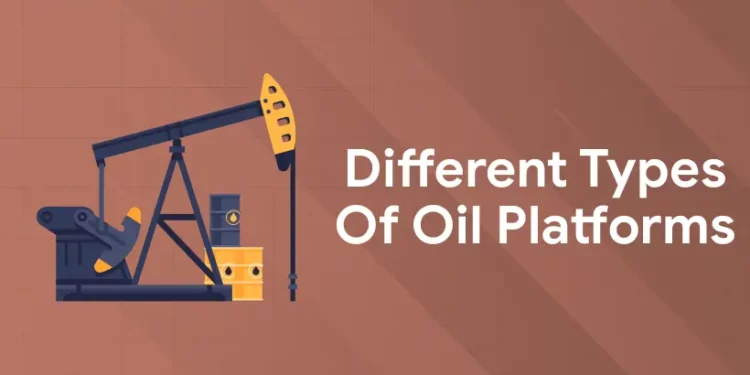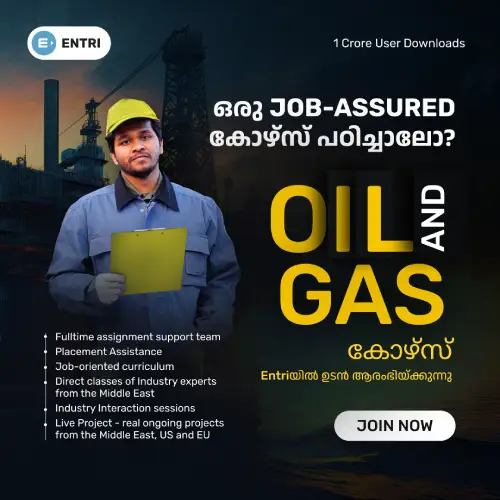The range of platforms is enormous. Processes, organisational structures, and state-of-the-art technologies must constantly evolve in order to support exploration and production in the oil and gas (O&G) sector. We progressed from the earliest onshore extractions to the modern offshore oil platforms, which are able to search for raw materials on the high seas and in difficult environments like the pre-salt, because of this pursuit of efficiency, sustainability, and productive capability.
There are various types of offshore platforms used for oil and gas drilling and exploration. While some of these are floating platforms or vessels, others are fixed to the ocean floor. Each is made for a particular purpose and water depth. Hundreds of maritime personnel may be employed by some floating production systems, which may also include storage or refinery facilities.
Join our Oil and Gas Course! Get Free Demo!
Types of Oil Platforms
Fixed
Fixed platforms are designed to be long-lasting structures and are composed of steel or cement. They have huge buildings, bulky machinery, and sizable workers. The majority are found in deep water up to 1700 feet on the continental shelf. They are able to drill in a directed manner up to five kilometres in radius. Large legs made of concrete or steel that fasten to the ocean floor stabilise the platform.
Jack-Up Rigs
Deeper water calls for the use of a transportable platform known as the “jack-up” rig. Its ability to be positioned immediately over the spot to drill or pump oil gives it this name. To keep the rig in position, it can be self-elevated, or jacked up, from the ocean floor. Rigs known as “jack-ups” work best in shallow waters that are 400 feet or less.
There are two kinds of jack-up rigs:
- Cantilevered Jack-up, including an extended arm supporting a drilling derrick
- Slot or Keyway Jack-up, which drills through an opening by placing a drilling unit above the platform
Condeep
Condeep platforms consist of one or more concrete shafts rising upward from a base of concrete oil storage tanks. The seafloor is where most of the platform is resting. Because of their resilience to severe weather and deep water, these platforms are mostly utilised in the North Sea and on the Norwegian continental shelf.
Self-elevating
Similar to the fixed platform, the self-elevating platform is intended for usage in shallow water, with a maximum depth of 130 metres. The primary distinctions are in the drilling’s only objective and its mobility. It can settle at one place, function as needed, lower the structure, and float to be transported to a new site when it has a hydraulic jack-and-pinion system.
Semi-Submersible
This kind of floating platform for drilling is a large structure. Huge columns supporting massive pontoons support the platform. To stay in place while drilling, it makes use of anchors or dynamic positioning systems (thrusters). This kind of drilling rig was used on the BP Deepwater Horizon.
Semi-submersible floating rigs are thought to be the most stable type. Oil firms frequently explore using semi-submersibles for drilling in choppy waters due to their capacity to stay still in less-than-ideal environments. The newest rigs can drill below 10,000 feet, and even below 3,000 feet.
Drillships
Drillships are currently the most in-demand drilling rigs. The majority of the drilling platforms that are being built right now are drillships. This is due to the fact that drillships provide a quicker substitute for semi-submersibles. Drillships can go to a new location in three weeks, whereas semis require more than two months to get there.
Drillships have the advantage of being able to operate in remote areas with fewer supply runs needed. Additionally, owners are able to charge more each day for their use because to their mobility and improved depth capabilities. They are not as stable as the typical semi-submersible, though.
TLWP
TLWP stands for Tension Leg Wellhead Platform, a device developed by a Norwegian for extraction mostly in the Arctic seas. Starting with a semi-submersible, the plan was to use tensioned steel cables fastened to piles hammered into the seafloor to anchor it to the bottom. But in water as deep as 1,000 metres, this technology made it possible to build a sturdy platform with a “dry” production system. Both the installation and operation are difficult.
FPSO
In general, production at the site drilled by a drill ship is handled by the FPSO platform. The model that originated in the 1990s is known as Floating Production Storage Offloading, which is a floating production, storage, and transfer unit. The FPSO, in contrast to the notion of a platform, is a sizable tanker vessel with storage capacity that handles all aspects of oil extraction and holds it until it is feasible to transfer to the shuttle. Similar to the drill ship, it can operate in waters as deep as 3,000 metres.
FPSO Monocolumn
It is capable of extracting, storing, and transferring crude oil to other transport vessels, just as the FPSO. The model has some clearance for use in deep waters. “An unfavourable aspect of the monocolumn is that it causes the ship to heave excessively in choppy seas, which can strain the production lines quickly in extremely choppy conditions.”
Entri App – Best Online app for Oil and Gas Course
Entri’s Oil and Gas Course is one of our most popular programmes, designed specifically for students interested in a rewarding career in the oil and gas business. It’s ideal for people who want to work in India and other countries for a good salary.
Entri’s ‘Oil and Gas Course’ is not a typical classroom experience. It’s a comprehensive training programme that gives you the abilities and information need to be successful in the fascinating field of oil and gas. You’ll have the opportunity to apply what you’ve learned in practical settings, which will enhance the value of your education and increase your chances of finding a fantastic job.
Key Differentiations
- Training by Industry Professionals
- Industry Interaction Sessions
- Live Projects
- Job-Oriented Curriculum
- Full Time Assignment Support Team
Conclusion:
There are many different types of models since every country has unique features on its coastline and oil fields that call for a certain kind of vessel that is more appropriate and compatible with the technology available at the time the field was built.
Join our Oil and Gas Course! Get Free Demo!
Frequently Asked Questions
How many types of offshore platforms are there?
Drilling platforms come in five primary categories, each with a number of distinctive variants.
What is the most common offshore oil platform?
The most popular kind of offshore drilling rig for drilling in waters deeper than 300 feet (90 metres) is the semi-submersible.
Who runs an oil rig?
Chief Engineer – Oversees many operations, including the mechanical operations on board the rig.










